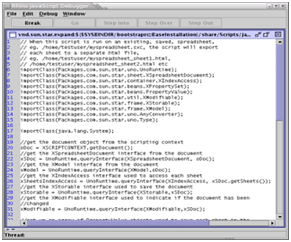
JavaScript is a client-side interpreted scripting language that enables you to enhance static web applications by working in tandem with HTML and Cascading Style Sheet (CSS). Our JavaScript training course will introduce the history of the programming language and outline how it is commonly used to develop dynamic web sites. Moving into the fundamentals of the language, the course will demonstrate the use of script in web pages, and the basic elements of the language, including variables and data types, operators, statements, and functions.
Target Audience
All organizations or individual consultants with a working knowledge of HTML and basic programming concepts, who intend to use JavaScript with HTML to develop interactive web applications that utilize cross-browser client-side scripting.
JavaScript Fundamentals Training Course
Each Training Tutorial is done in Full Multi Media. Over Ten Hours (10) of Training
Interactive Lab Exercises
Proven Track Record Over Ten (10) years of
JavaScript Fundamentals Training Course Covers
Language Basics
- Uses and capabilities of JavaScript
- Advantages of using key elements
- How to open, close, and add a statement to a simple program
- Place an opening tag in an HTML page
- Write and alert functions in a basic program
- Load an external file into a web page
- Turn a JavaScript program into a valid XHTML version that will work on non-XHTML-compliant browsers
- Appropriate name for a variable in a given scenario
- rHow to use parseInt or parseFloat to convert data types in a given scenario
- How arithmetic, unary, relational, and Boolean operators are used to affect data values.
- Distinguish between conditional, assignment, comma, and bitwise operators
- Distinguish between key statement types
- How to complete a statement to define or call a given function
- What is meant by variable scope and lifetime
- Declare and initialize a variable in a given scenario
- Switch statement within a function
- Add arithmetic operators within a function
- Call a function
Objects and Object-oriented Programming
- Benefits of object-oriented programming
- Concepts of extensibility and encapsulation
Object object in JavaScript
- How to create and use an object
- How the prototype object extends an object
- Ceate a constructor function for an object
- Extend an object using the prototype object
- Create an object of a particular type
- Appropriate String object method to use in a given scenario
- Define elements for an array object
- Appropriate array object method to achieve a desired result
- How to fill in the appropriate Math method to give a desired result
- How to use a method of the Number object to return a given result
- How to return a date or time using the Date object
- Calculate numerical and date information
- String object methods to check character codes and store data in an array
- Array object methods to process and write selected elements
Functions and Regular Expressions
- How function objects are defined and executed
- Anonymous functions
- How to call a function recursively
- Appropriate predefined function for a given task
- Define and call a function object in a given scenario
- Complete a recursive function
- Functions in a function expression
- How to create and initialize a RegExp expression object
- Appropriate method to use with a regular expression and predict the result, in a given scenario
- The output for a regular expression that includes attribute characters
- The results of using the replace method with a regular expression containing various characters
- Special characters and how they are used in testing a string for a specific pattern
- Regular expression using special characters and repetition characters
- Regular expression that will detect a given pattern
- Which entries would be validated by a given regular expression
- Create and initialize a RegExp object to detect a common pattern
- Validate a common pattern using a regular expression method
Browser Scripting Fundamentals
- JBrowser Scripting Fundamentals
- Key browser objects
- How to perform browser version checking using objects, properties, or methods
- Meaning of key elements of frame-defining code
- How to access variables and functions between frames
- How to open a new window with appropriate parameters, in a given scenario
- Set up a window containing frames with specified code access between them
- Window object to open a new window and change its location
- How to connect code to web page events using event handlers
- How to create and use form elements to return user-entered values
- Match form elements to the tags needed to create them
- Create a form containing HTML elements
- Set up an event handler
Advanced Browser Scripting and DHTML
- How to create and catch exceptions using throw statements
- How to complete a basic try...catch block
- How to verify that required fields have been modified
- How to validate user input using pattern matching
- Associate form validation approaches with their advantages and disadvantages
- How to create a cookie and set specific attributes
- To retrieve the value of a cookie
- Validate form information on the client side
- Set a cookie based on information from a given form
- Use a try...catch statement to detect and handle errors in a given scenario
- Retrieve the value of a cookie
- How to script DHTML that will handle events in any major browser
- The effect of various style declarations in CSS
- The implications of using a given approach for defining a CSS style
- How to retrieve an HTML element and modify its CSS style using DHTML
- Predict an element's appearance based on its CSS definitions
- DHTML event handler that is cross-browser compatible
- Use DHTML to change the appearance of an element
|












